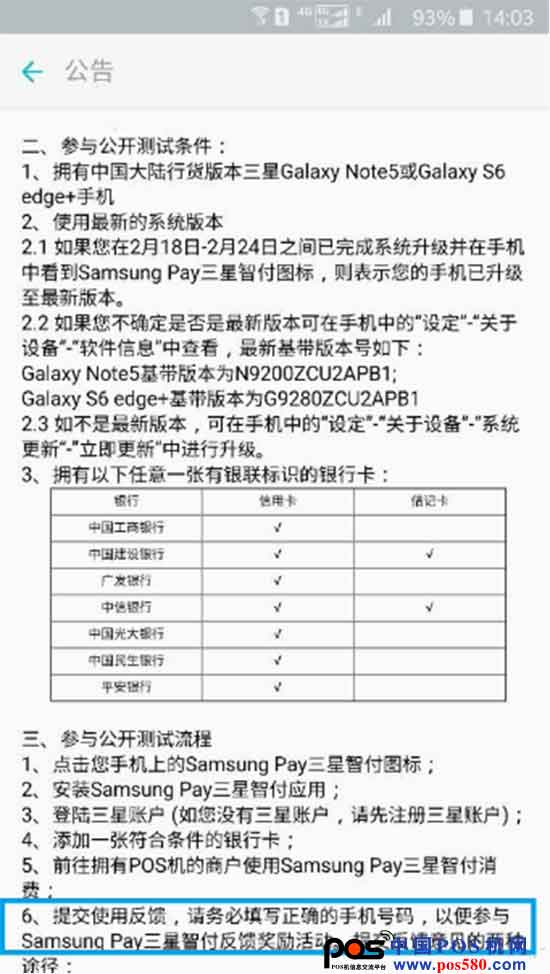What has Samsung Pay's emergence for the mobile payment industry?
With the official launch of Samsung Pay, the mobile payment market suddenly exploded. Like the last Apple Pay online, Samsung Pay's experience and test reports are endless. For the mobile payment industry, what is the significance of Samsung's launch of Samsung Pay? Why is it so much attention? Apple Pay, Huawei Pay, etc. can use about 30% of the "flash payment" POS machines in China, and Samsung Pay can use most POS machines. From the interface of Samsung Pay, the bank card is used to intuitively manage and select the bank card. This operation mode simulates the real bank card to the greatest extent. It is more intuitive to use and feels better. The bar countdown that occurs after fingerprint recognition also triggers the vibration feedback of the fuselage. The small details of this series can be said to be the result of the thoughtfulness of Samsung engineers in the user experience. Samsung's exclusive KNOX security solution DongGuan Lucky Pet Products Co., Ltd. , https://www.dgpetproducts.com
MST solves the biggest pain point of POS machines in China market
Start with the product features of Samsung Pay. The difference between Samsung Pay and Apple Pay, Huawei Pay, and other mobile payment applications is that Samsung Pay can support NFC technology (Near Field Communication), so that it can have NFC and UnionPay POS on the market. use. More importantly, Samsung Pay also supports Samsung's unique MST technology (magnetic signal transmission), which allows Samsung Pay to support most offline POS terminals.
From pure NFC to NFC+MST, the difference is just MST. And it is MST technology that makes Samsung Pay more widely available than other payment applications such as Apple Pay. According to statistics, POS machines with NFC functions in China account for only one-third of them. NFC payment needs to transform POS machines into “flash payment†POS machines, with a total cost of over 7 billion yuan. In the United States, there are only about 1 million stores with NFC credit card machines, accounting for only 10-15%. 
At present, China is an important market for the development of mobile payment, and Samsung Pay is the characteristic of deepening the Chinese market. Because the merchants update the POS machine is not very powerful, coupled with the update of the NFC-style POS machine, the clerk needs to re-learn and adapt, and the NFC-type POS machine is obviously slow to develop. MST technology is just right for the Chinese market.
Listening to the voice of consumers, the user experience is the core
Samsung Pay officially opened its public beta on February 24. During the public beta, Samsung Pay invited users to feedback the results and further improve the product. Such a gesture makes Samsung Pay closer to the user. Although it is a mobile payment application, it truly listens to the user's voice and continuously optimizes the software experience. This makes Samsung a step closer to the integration of hardware, software and services. . 
The key to payment applications: safety, security, or security
Security is a ubiquitous link, especially for mobile payments. However, the security of mobile payment, I personally think that it is divided into two aspects, privacy security and payment security.
As a mobile payment application such as Samsung Pay, from the perspective of business model, the partners have adopted the traditional four-party mode of issuing, receiving and transferring. Samsung does not have a payment account, does not participate in the payment process, does not provide payment services, does not deposit funds, and only provides technical support and mobile terminals. This further protects the privacy and data security of users.
For payment security, Samsung Pay also has multiple protections, including fingerprint authentication, payment tokens (Token) and Samsung's unique KNOX technology. Here I mainly talk about the payment token (Token). 
The Token is actually a very mature technology provided by UnionPay. It is used to protect the user's card data and the security of the transaction. Simply put, for each transaction, the merchant will only receive a payment token, replacing the actual bank card information with this payment token. In other words, your card number is dynamically encrypted by a series of algorithms, and the encrypted data can be unlocked to get your real card number. The card in Samsung Pay is actually a "virtual card" of a physical bank, which uses the "virtual card" to conduct transactions during the payment process, thus protecting the card information of the user entity.
In summary, boldly speaking, Samsung Pay is not only a mobile payment application that Samsung has fully innovated, but also represents Samsung's further experience in improving the overall use of mobile phone users through software experience. At the same time, making mobile phones replace wallets is another important tool in daily life. . Samsung Pay has a lot of imagination. From the perspective of a longer-term strategy in the future, Samsung Pay, which is widely, safely and conveniently used, makes Samsung and Apple's mobile payment and even mobile phones more competitive.
